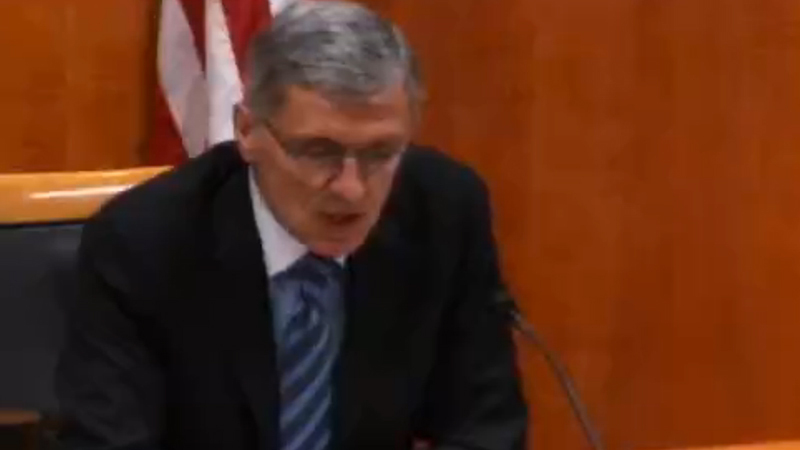FCC Votes To Make 25 Mbps The New Minimum Definition Of Broadband
As expected, the FCC voted this morning to approve a new standard for defining what qualifies as broadband internet. The new standard officially requires a minimum download speed of 25 Mbps, an enormous increase from the previous minimum standard of 4 Mbps.
The new broadband definition came as part of a 3-2 vote to accept the findings of an annual report on the state of broadband adoption in the US. The presenters delivering report explained that Congress defines advanced telecommunications capability as “enough broadband to originate and receive high quality voice, data, graphics, and video.” In 2010, the FCC determined that 4/1 was sufficient to meet that standard. But the tools change.
The new report looks not only at individual access but also at household use, where all members share a connection across their several simultaneously active devices. And the report authors announced that, “with this in mind, as well as the services that providers are marketing and customers are choosing, this report finds that ‘advanced capability’ means access to download speeds of at least 25 Mbps, and upload of at least 3 Mbps.”
Given that new standard, the report finds negatively that broadband expansion and coverage are not at all where they need to be, and that the FCC needs to do more to get Americans connected.
Commissioners Mignon Clyburn and Jessica Rosenworcel spoke warmly about the higher standard, both looking to the rapid growth of internet-connected devices and services.
Clyburn commented that earlier this month at CES, we saw “some amazing innovations, like wearables, which promise to greatly improve the quality of life, particularly for those most vulnerable and fragile.” But, she added, “with no internet infrastructure, without ubiquitous broadband, and absent the means to connect, these incredible inventions” are basically useless. “What is crystal clear to me is that the broadband speeds of yesteryear are woefully inadequate today and beyond.”
Rosenworcel likewise looked far into the future in her approval. “We can do audacious things if we set big goals,” she said, “and I think our new threshold, frankly, should be 100 [Mbps]. I think anything short of that shortchanges our children, our future, and our new digital economy.”
Commissioners Pai and O’Rielly dissented vehemently. O’Rielly took exception to the idea that any standard should take into account dawning new uses like streaming 4K video. “Some people believe probably incorrectly that we are on a path to interplanetary teleportation,” he mocked. “Should we include the estimated bandwidth for that as well?”
Pai also found the new standard to be unrealistic, and lashed out at Wheeler, saying, “for some time now under this administration, grounding the new benchmark for broadband in reality hasn’t been the point.”
Pai and O’Rielly both called out 25 Mbps as unneccessary, saying that tasks like streaming 4K video are so narrowly adopted that broadband doesn’t need to support it, and citing “consumer preference” that “only this year has the majority of consumers with access actually adopted speeds of 10 Mbps or higher.”
Of course, that might have something to do with the number of homes served only by DSL or satellite, where speeds over 10 Mbps are hard to come by, or the fact that cable packages with speeds of 25 Mbps or higher are expensive. It also disregards the chicken and egg problem, where consumers who don’t have access to reliable, high-speed connections aren’t going to pursue activities like trying to watch 4K programming on Netflix while also background downloading a 25 GB game onto their gaming console.
Chairman Wheeler spoke last, directly calling out the discrepancy between telecom’s lobbying and advertising. “Somebody is telling us one thing and telling consumers another,” Wheeler said of Comcast, Verizon, AT&T, and Time Warner Cable.
Speaking of Verizon, for example, Wheeler said that Verizon’s filings with the FCC read, “Consumers continue to find that services at the existing 4Mbps/1Mbps threshold meet their needs for broadband services and a higher benchmark would serve no purpose.”
Verizon’s own marketing materials, meanwhile, explain that although FiOS provides great bandwidth, “you’d be surprised how fast it goes,” and specifically says that their 25 Mbps connection “is best for one to three devices at the same time,” but that a family or household with three to five devices in it should go for 50/50 or better.
“Our challenge is not to hide behind self-serving lobbying statements,” he concluded, “but to recognize reality. And our challenge is to help make that reality available to all.”
The full 2015 Broadband Progress Report is not yet available online but should be soon.
Want more consumer news? Visit our parent organization, Consumer Reports, for the latest on scams, recalls, and other consumer issues.


